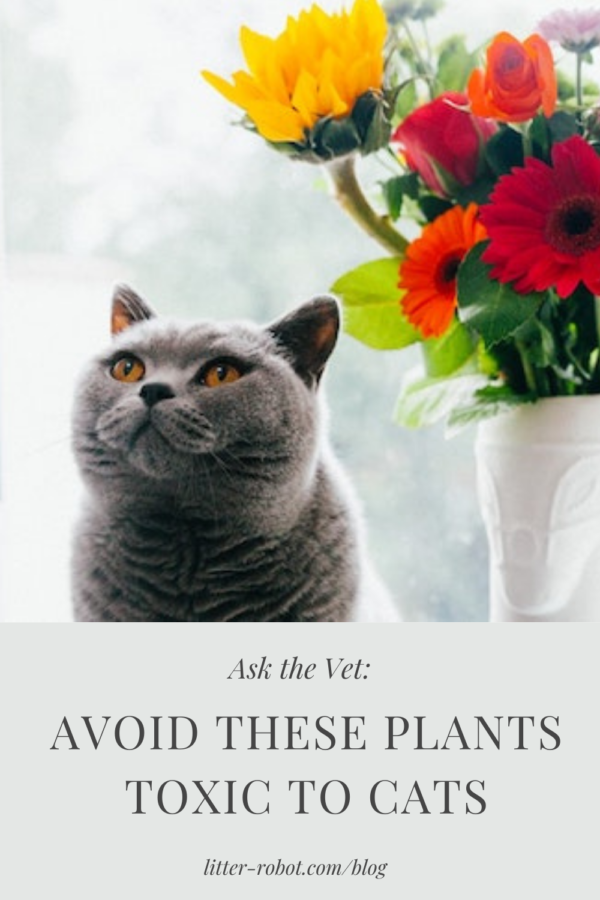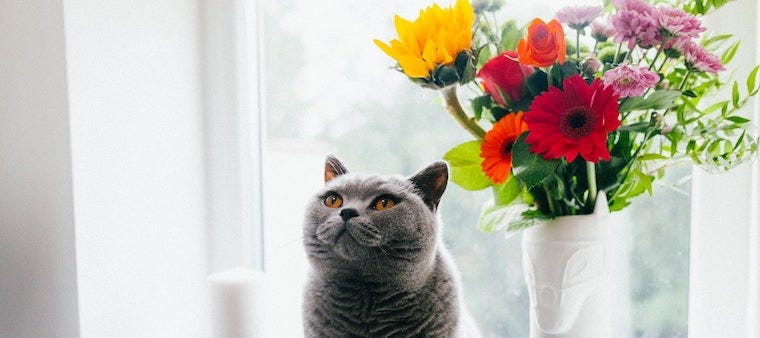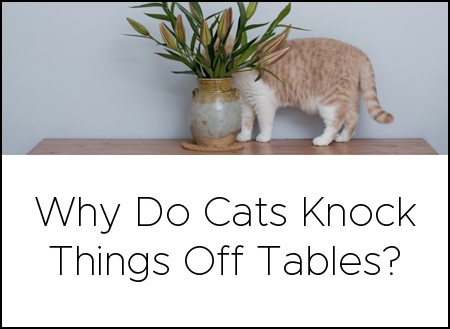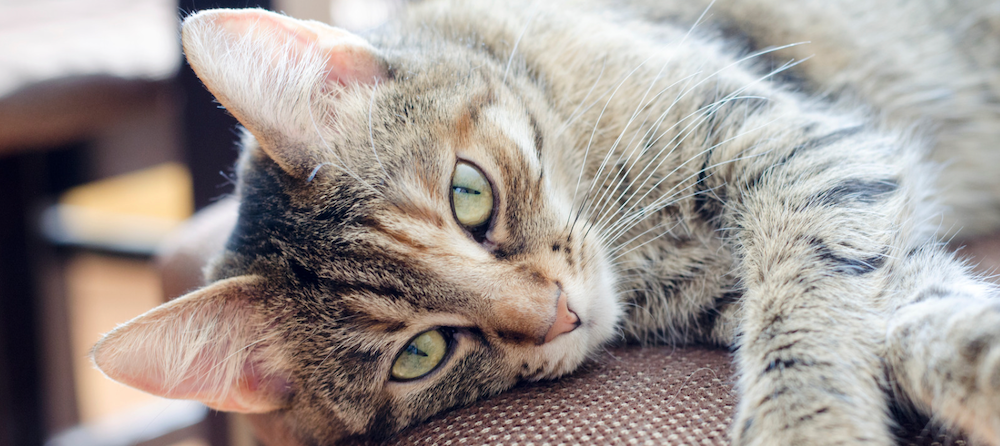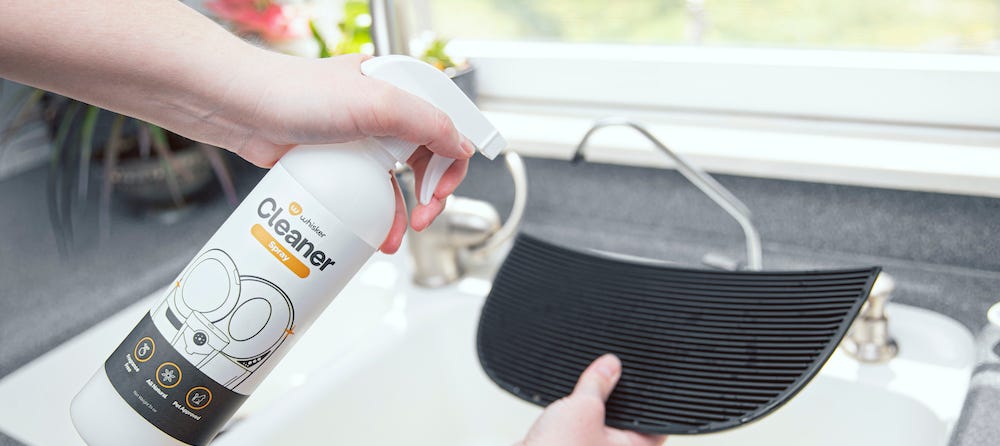March is Poison Prevention Awareness Month, and every third week of the month is National Poison Prevention Week. While these awareness events are designed to protect two-legged humans, we veterinarians have also used this time to help promote keeping our pets safe! Specifically in this post, I’ll be covering plants toxic to cats.
Cats are drawn to plants
The ASPCA Animal Poison Control Center (APCC), the only non-profit poison control center in the world, releases a top 10 poisons list affecting dogs and cats each year. And guess what? Plants are always on that top 10 list… thanks to our curious cats. While cats are naturally carnivores, they seem to enjoy munching on greenery, including both indoor and outdoor plants.

While the ASPCA APCC does have an amazing resource of safe versus poisonous plants on their website, keep in mind there are hundreds of plants listed.
As a toxicologist, my general rule is that 90% of the plants out there just result in mild gastrointestinal signs, like self-limiting vomiting and diarrhea. However, there are a handful of plants that are truly dangerous – or even deadly – to cats.
Keep reading to find out about the plants toxic to cats and how to cat-proof your house, especially if you have a green thumb!
Avoid these plants toxic to cats
As a cat parent, you need to keep houseplants out of reach. In full disclosure, I have lots of houseplants inside, but I know they are all safe (or just result in mild vomiting!). But I never bring any type of bouquets or cut flowers (e.g., ones you bring from your outside garden) into the house without a thorough inspection. Why? Because many of these contain plants that are deadly to cats.
Now, most cat parents are aware of the dangers of their cats chewing on plants in the household. But I hear all too often in the veterinary ER that pet parents are putting these flower bouquets “out of reach” where their cat can’t reach them. These are lies. Cats are quick and nimble and can sprint into a room or jump onto an elevated shelf faster than you think, and by the time you notice it, it may be too late. If you happen to store a bouquet at the very top of a cupboard, even the dried leaves can fall down onto the ground—these are just as poisonous when ingested.
My general rule is to never bring a florist bouquet into the house unless you can identify every single plant and leaf within that bouquet.
If you’re not sure, you need to ask the florist or a local master gardener or botanist. (And that includes the green leaves too!)
Lilies (Lilium or Hemerocallis spp)
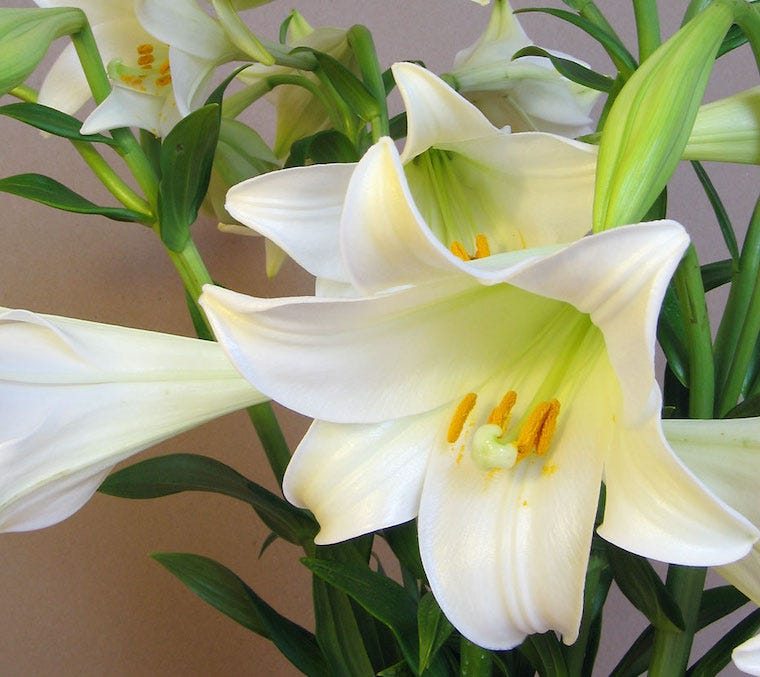
Of all plants, lilies—specifically true lilies from the Lilium or Hemerocallis spp.—are the ones I worry about. Examples of these include Easter, Japanese show, Tiger, Asiatic, and some types of Day lilies. This is my #1 no-go green leaf or plant to have in a cat household. And guess what? They are the #1 plant found in florist bouquets, as these lilies smell great, are inexpensive, and have a huge, beautiful bloom (typically 4-6” wide in diameter) that lasts a long time. Sadly, even the green leaves are toxic as part of the bouquet!
As my own sister’s cat died of lily poisoning, I’m really passionate about spreading awareness about how deadly this beautiful flower is. Of all the dangerous plants, this is the deadliest to cats. As little as 2-3 leaves or flowers can result in severe acute kidney failure in cats. That means that 75% of both kidneys have shut down. Even the water in the vase containing lilies is poisonous, so if your cat happens to drink the water, he or she could die of kidney failure. If your cat brushes by a flower bouquet and gets the pollen on their fur and grooms it off, your cat can go into kidney failure. That’s how deadly this plant is.
Note that not all lilies are equally poisonous or dangerous. Calla lilies, peace lilies, Peruvian lilies, and a few other types of plants with “lily” in their name aren’t “true” lilies and do not result in kidney failure… but they can cause other signs, so always check with the ASPCA Animal Poison Control Center to be safe!
Beware lilies around Easter
For me, National Poison Prevention Week couldn’t come at a better time… because it just happens to occur right before the Easter holiday. As an emergency critical care veterinary specialist, I dread the week leading up to Easter, as I end up having at least half a dozen cats hospitalized each night after being poisoned by Easter lilies. And it’s heartbreaking because it can cost several thousands of dollars in order to treat your cat for this poisoning. Treatment includes decontamination (e.g., inducing vomiting followed by one dose of activated charcoal), aggressive IV fluids, blood work monitoring, gastrointestinal medication, and supportive care for a minimum of 48 hours. Worse yet? It can potentially result in long-term scarring or damage to your cat’s kidneys, even if they recover from the initial poisoning!
Insoluble Calcium Oxalates (Araceae, Dieffenbachia, Philodendron)
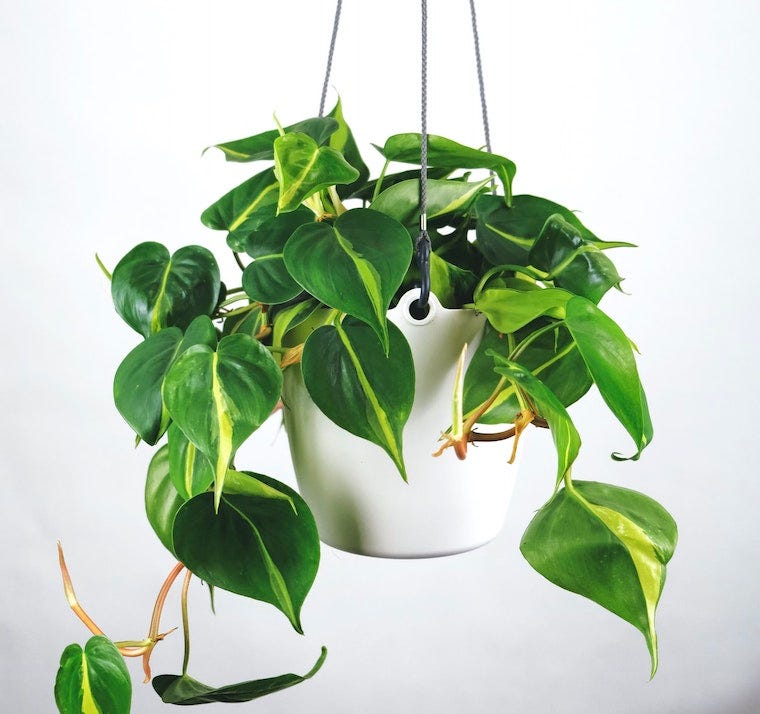
The next few plants I wanted to talk about aren’t that poisonous. In fact, you can often manage these plant poisonings at home (and yes, I have some of these plants at home myself!). But I wanted to mention them, as they are the most COMMON plants that are in households. According to the ASPCA Animal Poison Control Center, the most common plant exposure is from the Araceae, Dieffenbachia, or Philodendron plant family, which are insoluble calcium oxalate plants. Why are these so common in households? Because they are easy to grow! (Or hard to kill!) They barely require water or light and can survive really well. Other types of insoluble oxalate containing plants include:
- Arrowhead vine
- Calla lily
- Devil’s ivy
- Dumbcane
- Elephant’s ear
- Mother-in-law’s tongue
- Peace lily
- Philodendron
- Pothos
- Sweetheart vine
- Umbrella plant
These common household plants contain needle-sharp crystals, so when your cat chews on the plant, the crystals cause profuse pain, drooling, pawing at the mouth, self-limiting vomiting, and swelling around the mouth. While it looks dramatic, you can simply offer something tasty—like canned tuna water (not oil!), milk, yogurt, or chicken broth—to flush the crystals from the mouth. Keep in mind that insoluble calcium oxalates are totally different from the next poisonous plant.
Soluble Calcium Oxalates
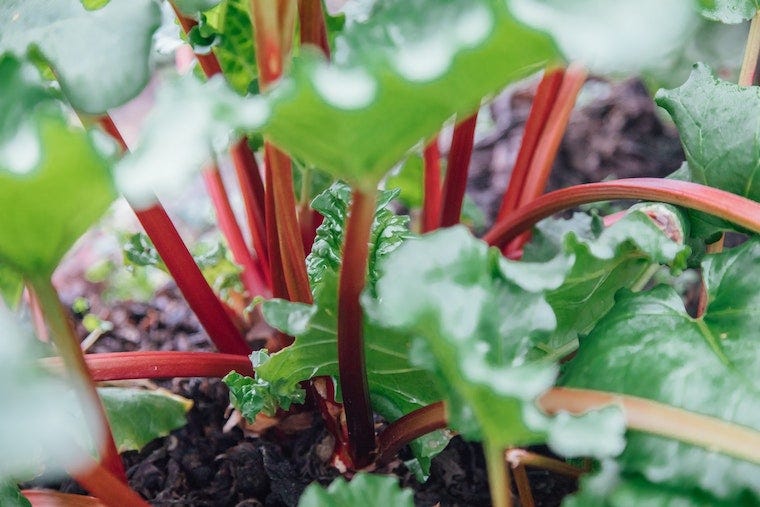
Okay, this plant class is only missing the two letters “IN.” They sound similar and I’ve seen way too many pet websites confuse the two! Insoluble calcium oxalate plants are NOT a big deal, but SOLUBLE calcium oxalate plants can be! These plants contain oxalic acid and oxalate salts, and include much less common plants, such as:
- Starfruit
- Common or garden rhubarb
- Shamrock plant
(BTW, it’s safe to eat the stalk of rhubarb, but this is why you can’t eat the leaves!)
In my 20+ years of being a veterinarian, I can count on one hand the number of times I’ve treated a cat for eating a starfruit or shamrock plant! But this one can be quite poisonous, albeit rare. (It’s also poisonous to humans with chronic kidney disease who are hemodialysis!) Soluble calcium oxalate plants bind to the calcium in your body, resulting in calcium crystals getting stuck in the kidneys. Signs include vomiting, not eating, shaking, weakness, and general malaise that can progress to acute kidney failure in cats. Treatment is going to be similar to treatment for true lilies.
Poinsettias
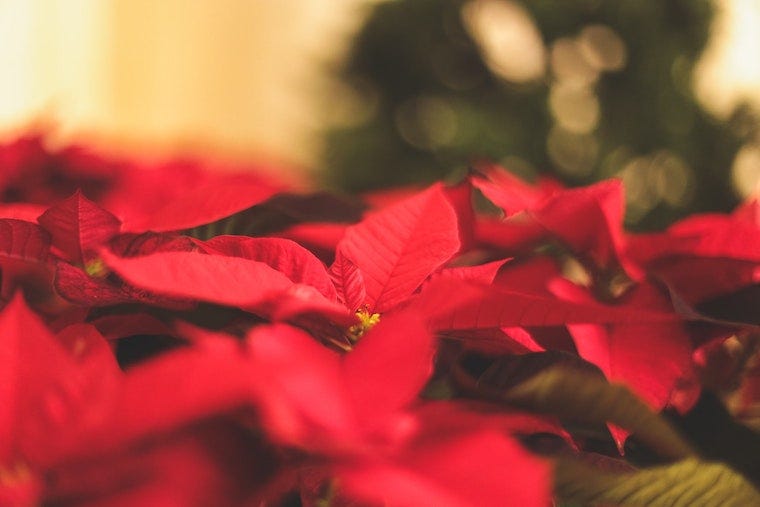
Stop the hype! Most people are taught that poinsettias are plants toxic to cats, but honestly, they’re not a big deal. You can have these in your cat-friendly house (at least I do during the holidays!). Poinsettias are commonly implicated as a “poisonous plant” but generally only cause mild clinical signs. Thanks to that irritating, bitter milky sap in the leaf, it causes mild drooling and self-limiting vomiting. One bite and your cat will quickly stop munching.
Cardiac Glycosides
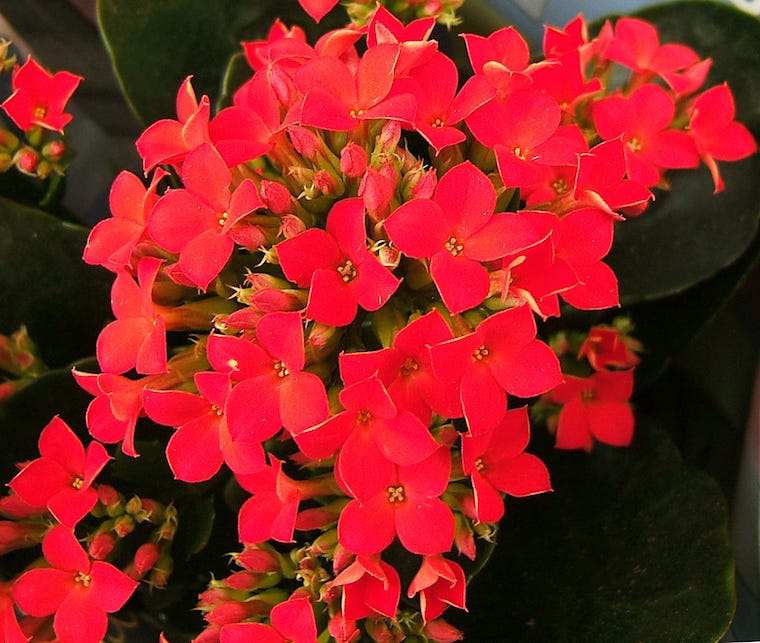
Cardiac glycoside-containing plants are generally beautiful flowers. They often grow outdoors, but some are sold as smaller houseplants (such as kalanchoe) in the supermarket plant aisle. These plants contain heart-like medications that are commonly used for people and animals with heart disease (e.g., digoxin), and as a result, can cause heart arrhythmias when ingested. Thankfully, most cats won’t chew on them, but as these can be deadly—especially when ingested in larger amounts, so it’s best to keep your cat indoors or away from these. Examples of cardiac glycoside plants include:
- Dogbane
- Foxglove
- Giant milkweed
- Kalanchoe
- Lily of the valley
- Milkweed
- Oleander
- Star of Bethlehem
Signs include vomiting, nausea, weakness, abnormal heart rhythms, and rarely, electrolyte abnormalities and seizures. Treatment includes inducing decontamination (if appropriate), ECG and blood pressure monitoring, IV fluids, anti-vomiting medication, and rarely, heart medications. This one does have an antidote called digoxin-specific Fab fragments, for severe, life-threatening cases. Luckily I’ve never had to use it in a cat, as cats typically don’t ingest very much of this plant!
Mushrooms and Sago Palm

Thankfully, most cats won’t touch mushrooms and sago palm, but some types of mushrooms can be deadly and result in organ failure. Sago palm is more commonly ingested by dogs, and can result in severe liver failure. Sago palm typically is found outside growing as a large palm-like landscaping plant, but occasionally you can find them as an indoor bonsai plant. Not worth bringing home to any pet household!
Garden Products
Lastly, if you let your cat go outside, he or she may be exposed to fertilizers or other chemicals that can cause vomiting, diarrhea, or even more severe neurologic signs. To be safe, keep your cat indoors or these gardening products out of reach.
Now that you’ve seen the most common plants toxic to cats, go cat-proof to keep our four-legged feline friends safe! Review our list of houseplants safe for cats and check with the ASPCA before bringing any plants home. Another safer option: Grow some cat-safe catnip or wheatgrass for them instead!
Cover photo by Josh Couch on Unsplash
